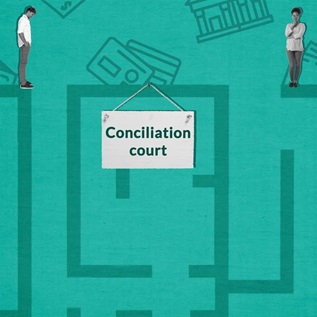Two Years after Credit Card Act, Pew Finds Interest Rates and Other Fees Stabilized
Washington, DC — Credit card holders are seeing stabilized interest rates, the elimination of overlimit penalty charges, a reduction in late fees charged by banks and minimal changes in annual fees since the Credit CARD Act of 2009 took effect, according to new research by the Pew Health Group's Safe Credit Cards Project.
Pew data show that the median advertised interest rates for purchases on bank credit cards remained unchanged from 2010. Meanwhile, bank cash advance and penalty rates held firm. Additionally, the percentage of cards with annual fees held steady for credit unions, at 14 percent, and increased for banks, from 14 percent in 2010 to 21 percent in 2011. The amount charged for annual fees remained unchanged.
“Pew's research shows that predictions that the legislation would spark new charges and long-term interest rate growth have not materialized,” said Nick Bourke, director of Pew's Safe Credit Cards Project. “Whatever increases in advertised interest rates we saw going into 2010 have not continued into 2011. The Act created a new equilibrium where interest rates have flattened, penalty charges have declined and a number of practices deemed ‘unfair or deceptive' have disappeared. Consumers are enjoying safer, more transparently priced credit cards - and banks and credit unions are able to compete on a more level playing field.”
The study, A New Equilibrium: After Passage of Landmark Credit Card Reform, Interest Rates and Fees Have Stabilized (PDF), is the latest in a series of reports from the Pew Safe Credit Cards Project that has examined all consumer credit cards offered online by the nation's 12 largest bank and 12 largest credit union issuers. Together, these institutions control more than 90 percent of the nation's outstanding credit card debt. For this latest report, which measures how the industry has changed since the passage of the Credit CARD Act, Pew collected data in March 2010 and January 2011. Full details, including previous research, can be found at www.pewtrusts.org/creditcards.
Key findings show:
- Interest rates have stabilized. Median advertised interest rates for purchases on bank-issued credit cards held steady at 12.99 to 20.99 percent. Likewise, bank cash advance and penalty interest rates remained unchanged from 2010 to 2011. During that same period, median credit union purchase rates slightly increased and cash advance rates declined.
- Penalties cost less. Since the enactment of the legislation, overlimit penalty fees have all but vanished. Only 11 percent of bank credit cards now include them, while the largest credit unions have eliminated them entirely. Pew's research finds that late fees continue to be widespread. However, the cost of fees has gone down now that the law limits first-time late fees to $25 in most cases.
- Annual fees have changed little. Last year, roughly 14 percent of both bank and credit union cards carried annual fees; in 2011, that number held steady for credit union-issued cards and rose to 21 percent for bank-issued cards. The amount charged for annual fees held stable at a median of $59 for banks and $25 for credit unions. Forty percent of cards with annual fees included no-fee promotions for the first year.
The Credit CARD Act, signed on May 22, 2009, is a comprehensive law that aims to protect consumers by restricting when interest rates can be raised on existing balances and banning “unfair or deceptive” practices. It also allowed new rules to be created to ensure that late charges and other penalties charged by issuers are “reasonable and proportional.” The bill passed with bipartisan support by both the House of Representatives and the Senate.
“The Credit Card Act is an excellent example of how bipartisan legislation can be enacted that both protects consumers from potentially harmful practices while simultaneously creating a marketplace where banks and credit unions are able to compete based on clear and predictable pricing,” said Eleni Constantine, director of the Financial Security Portfolio at the Pew Health Group. “Congress should take a similar approach to make other financial products, such as checking accounts and short-term, small-dollar loans, safer and more transparent.”











